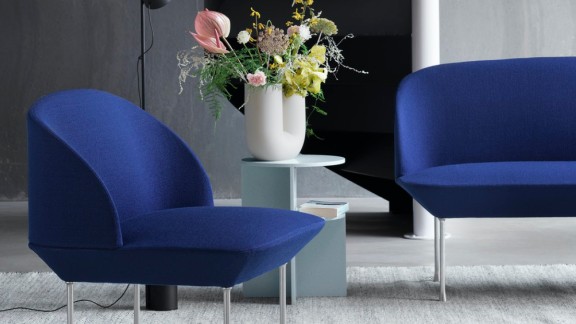The effect colours have on your office at home
Since the coronavirus pandemic began, the office at home has become the main workspace for many people – a trend that is probably set to continue even after rules have been eased. This is why not only the technology but also the design play an important role when setting up the space. For example, did you know that certain colours improve your concentration?

Colours impair our senses, can enhance moods and support characteristics. When working from home, however, some tact is required when using them. Most people do not have a complete room available for this, but instead only a certain area. And it should be designed so that you can concentrate well there. However, it’s more important not to create contrasts that differ too much from the rest of the room, so that the overall impression is harmonious.

A few pieces of furniture and accessories in the same shade of colour are already having their effect. Image: Mudassar Iqbal, Pixabay
The right dosage is important
Generally, the following applies to colours: the effect not only depends on your personality, but on the dosage, too. So it’s better to start with smaller areas of colour first. Even single spots of colour can achieve the desired effect in a room. A few accessories are enough to accentuate.
What colour has what effect?

Different colors can influence our work in the home office in different ways. Photo: Pixabay
- Yellow has an especially intense meaning for the psyche and has a positive effect on creativity and concentration. Furthermore, it counteracts tiredness and fatigue and makes small rooms feel bigger – ideal for a workspace at home.
- Orange fosters optimism and self-confidence and exudes an air of cosiness. It makes rooms appear brighter, which makes it perfect for corners with little daylight.
- Red provides energy. This colour should however be used sparingly because it can also quickly give off a feeling of disquiet.
- Earth tones, on the other hand, have a calming and balancing effect. As a result, colours such as brown, greige or mud are excellently suited as basic colours.
- Purple is the colour of art and inspiration. The fact that it also promotes concentration is definitely an advantage in a workspace.
- Gold can be put to good use for accessories. Alongside having an inspiring effect, it is also supposed to provide balance for feelings of inner unease.
- Green stands for harmony – it’s calming and enhances creativity. Subtle green accents can especially be made using plants, which also have a positive effect on the air in the room.
- We connect blue to tranquillity – it promotes clear, structured thoughts. It’s easier for us to get to grips with new things in an environment that is blue. Walls painted in a light shade of blue make rooms appear bigger.
- Turquoise provides clarity, self-confidence and peace of mind and is a particularly good choice as a colourful eye-catcher.
Simply give it a go

Coloured areas on a wall are often enough to achieve an effect. Painting isn’t always necessary. Photo: Bongkarn Thanyakij, Pexels 156
While certain moods can be promoted in zones of colour, the possibilities in your workspace at home are of course somewhat more limited. Generally, colours should be used more sparingly in this space. However, there is an opportunity here to experiment with different tones. For example, you can hang up a nice frame containing a simple, coloured sheet of paper on the wall as a motif and simply change it whenever you want. Then maybe you can say: ‘Today, I’m not feeling so blue.’




